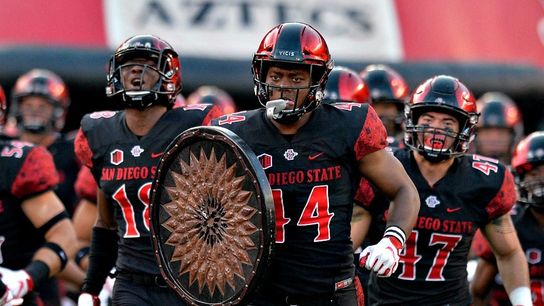The Chargers' move to Los Angeles gave San Diego State a gigantic opportunity. As soon as the Bolts' moving trucks crossed city limits, the Aztecs became THE football team of San Diego. It was them or... nobody.
Now, San Diego State has the nation's 17th largest metro area all to itself. At 3.38 million, San Diego is half a million people larger than the next-largest city without a pro football team (St. Louis). With their closest competition more than a hundred miles away, a winning tradition firmly in place, and more than enough talent within half a day's drive, San Diego State has all the pieces in place to become the West Coast answer to UCF.
All they need is a stadium.
SDCCU Stadium, the 70,000 seat toilet four miles east of campus, is what chased the Chargers out of San Diego in the first place. Built at the low point of American architecture, the 53-year-old hunk of junk was designed to be a baseball and football venue and ended up being neither. As a baseball field, it's cavernous and lacks even a shred of character. As a football stadium, it's... cavernous and characterless, with terrible sight lines thrown in as a bonus. (I once sat in the corner of the end zone, lower bowl, and could not see the action taking place just below me.)
Even in an age of coronavirus-induced belt tightening, there's no denying San Diego State needed a new stadium. Its own stadium. A program that averaged 29,000 fans had no business playing in a half-a-century old, 70,000-seat stadium designed to host NFL and MLB teams.
At last, San Diego State's problems are solved. Eventually.
The California State University board of trustees approved the building of a 35,000 seat multi-use stadium back in March, and on Monday that stadium got a name, a Twitter account and an artist's rendering.
https://twitter.com/aztecstadium/status/1257354427419234305?s=21
The stadium will be in the Mission Valley section of San Diego, nearby SDCCU Stadium. San Diego State plans to transfer the area from city property to the university's, then use Aztec Stadium to anchor a satellite SDSU campus as well as commercial and residential space, all of which SDSU will control.
“The project is about the transformation of a community and the revitalization of public land,” San Diego State president Adela de la Torre said back in November.
At a cost of $310 million, San Diego State will play the 2020 and '21 seasons at SDCCU Stadium before moving to their own place.
It'll be worth every last penny.
